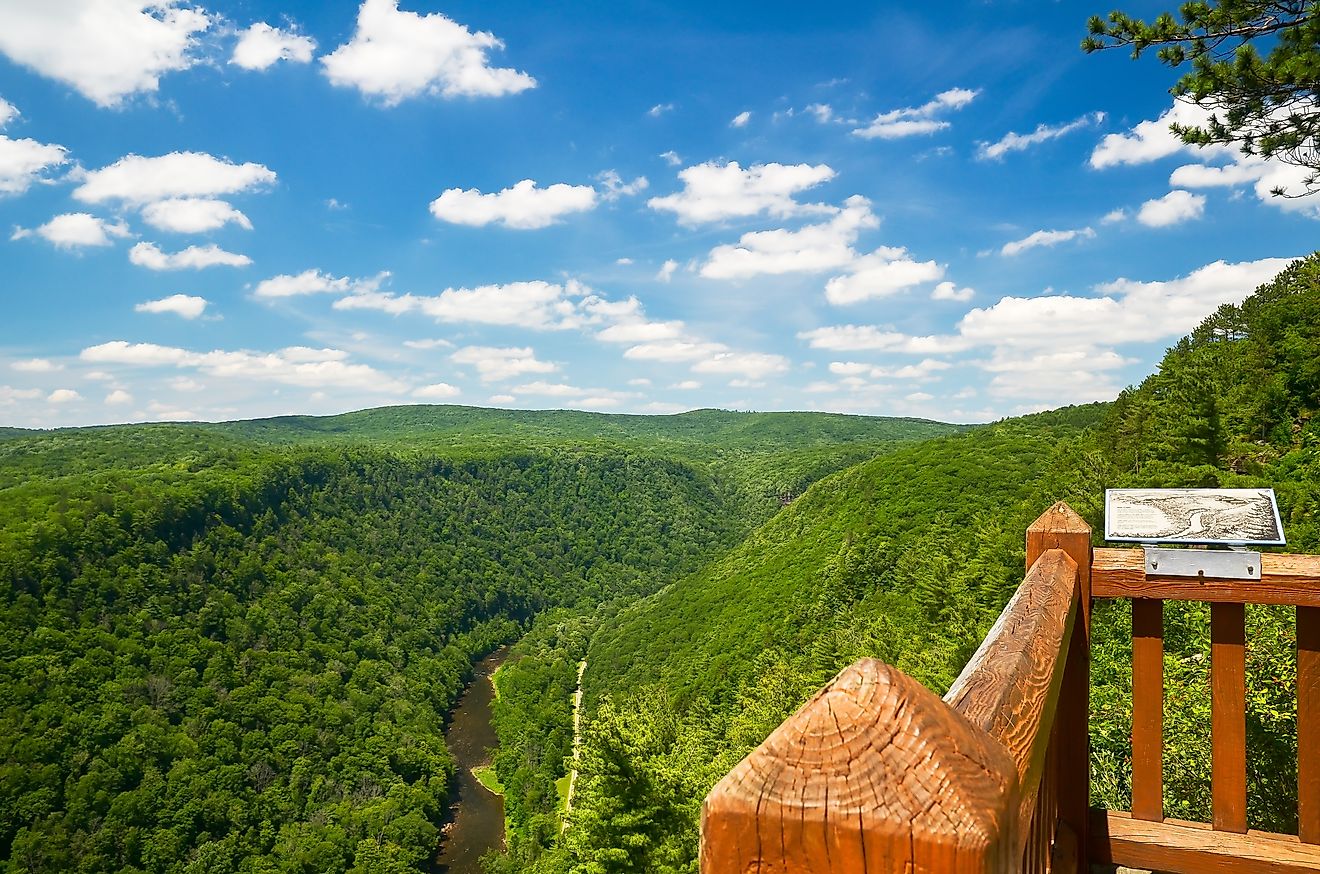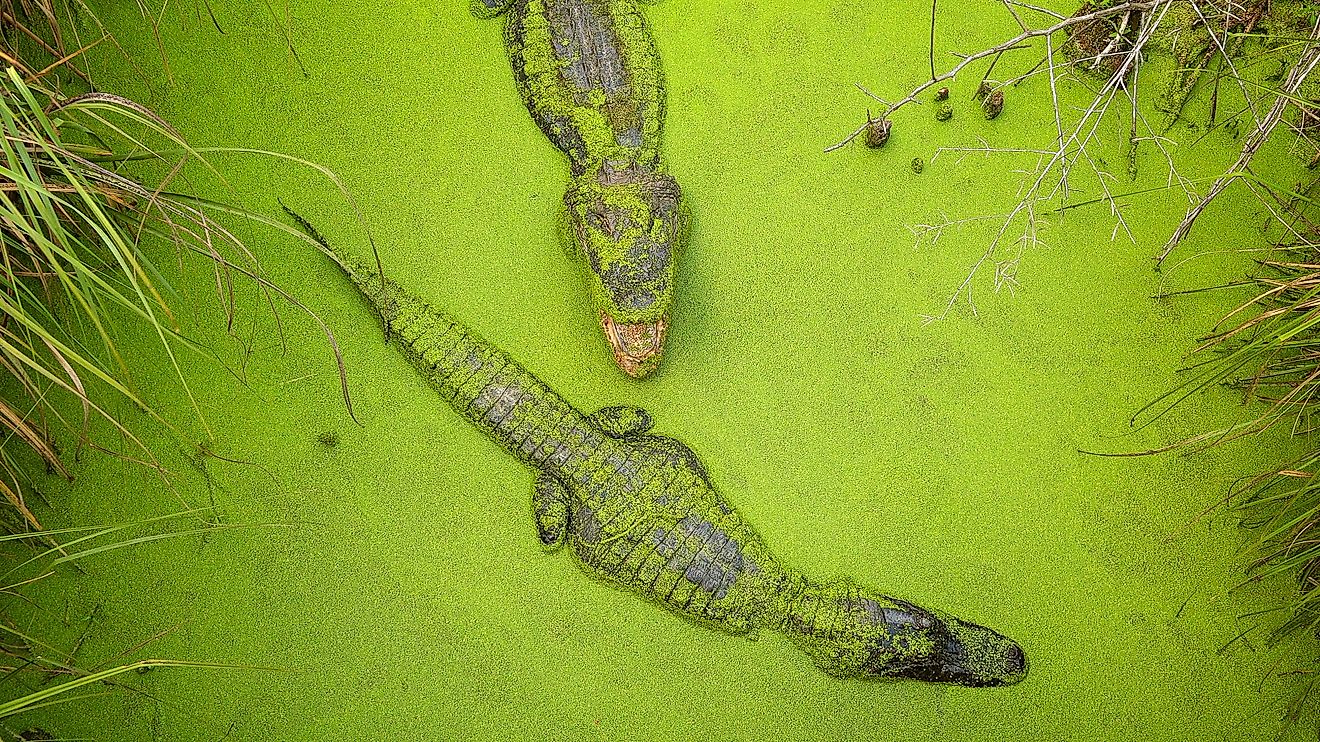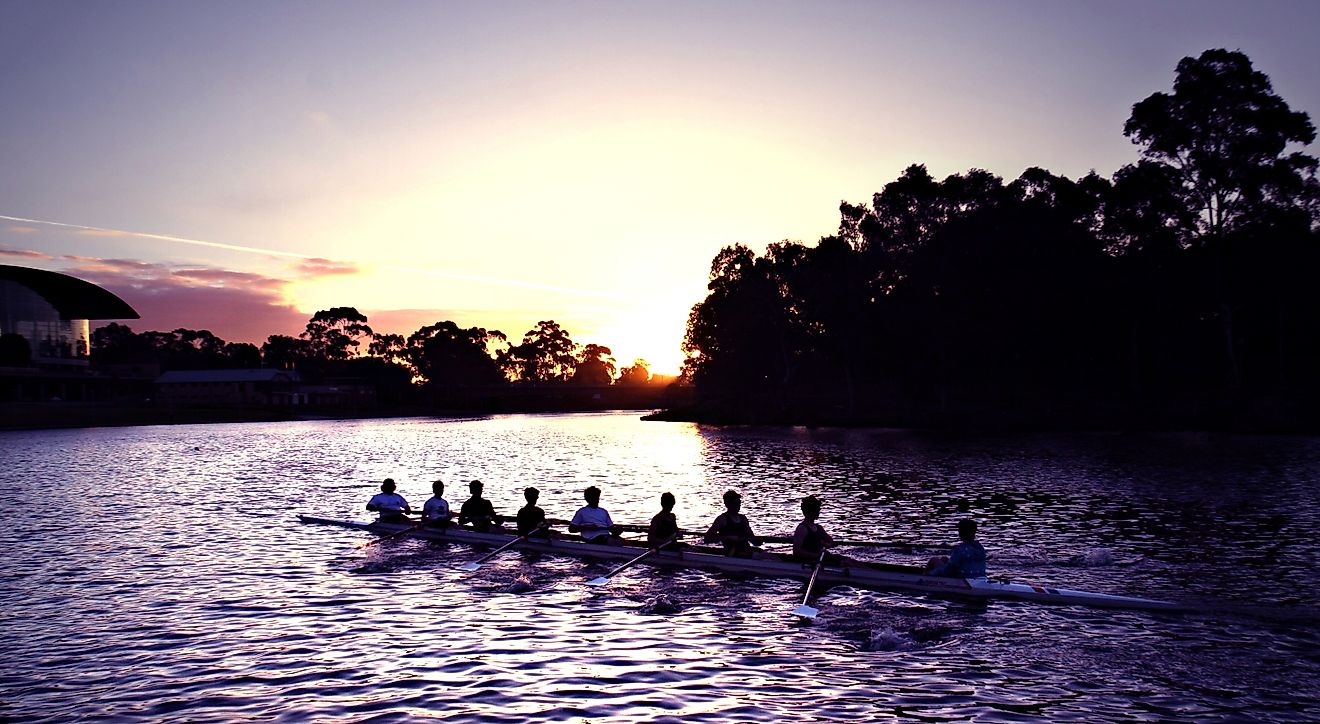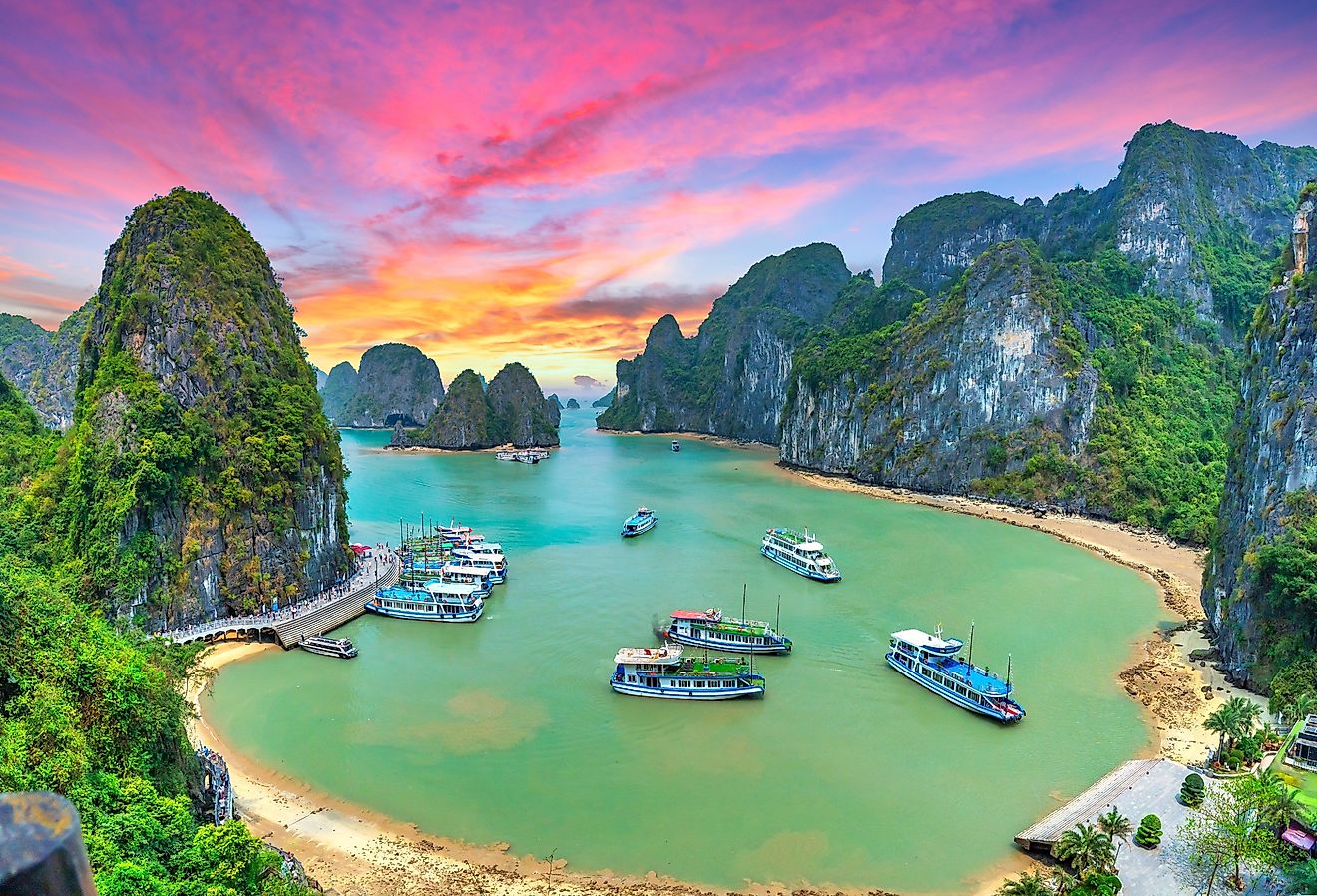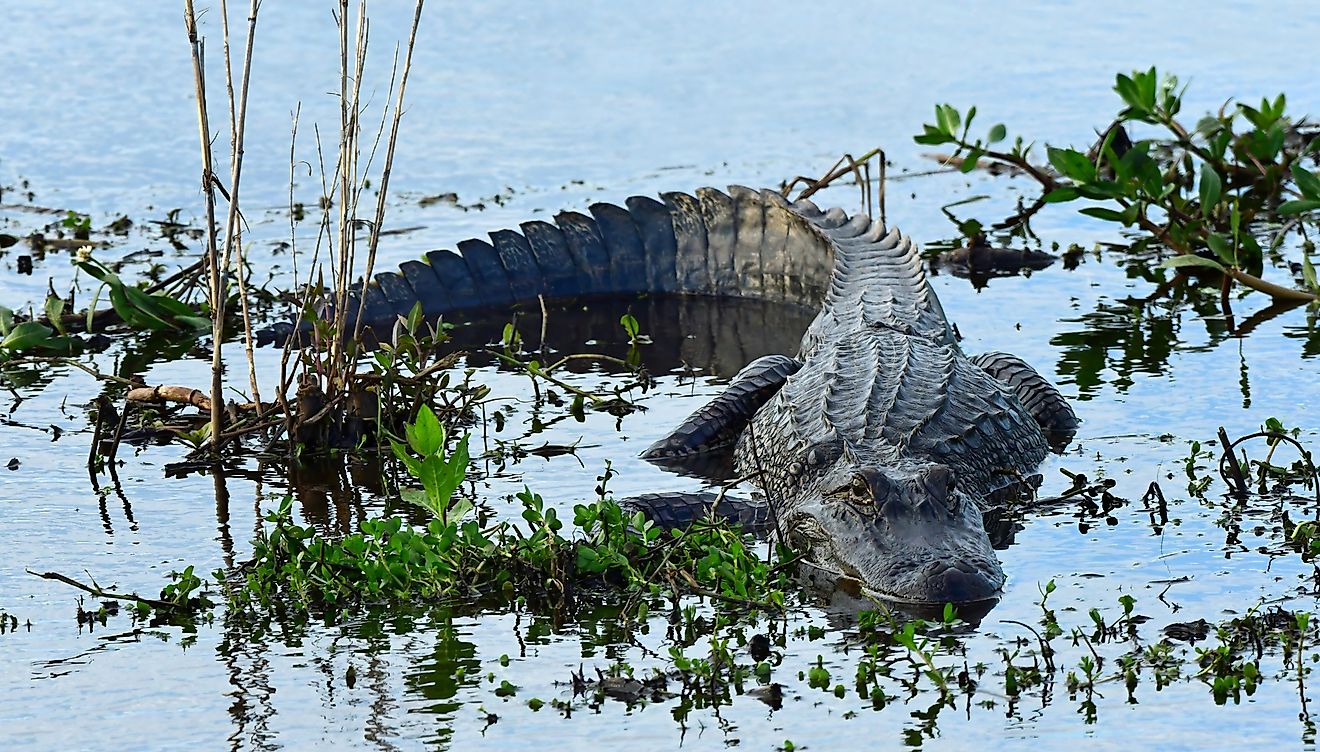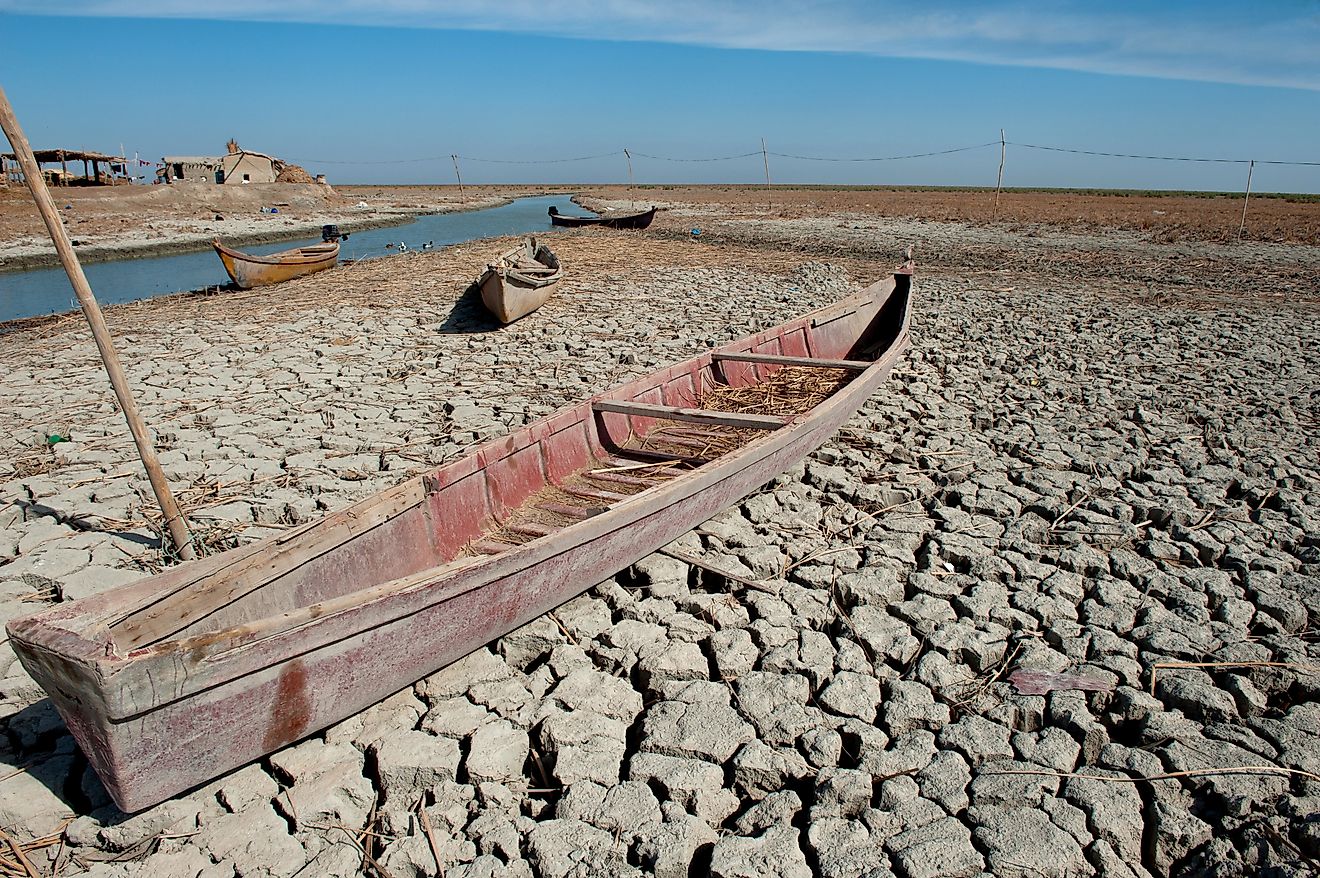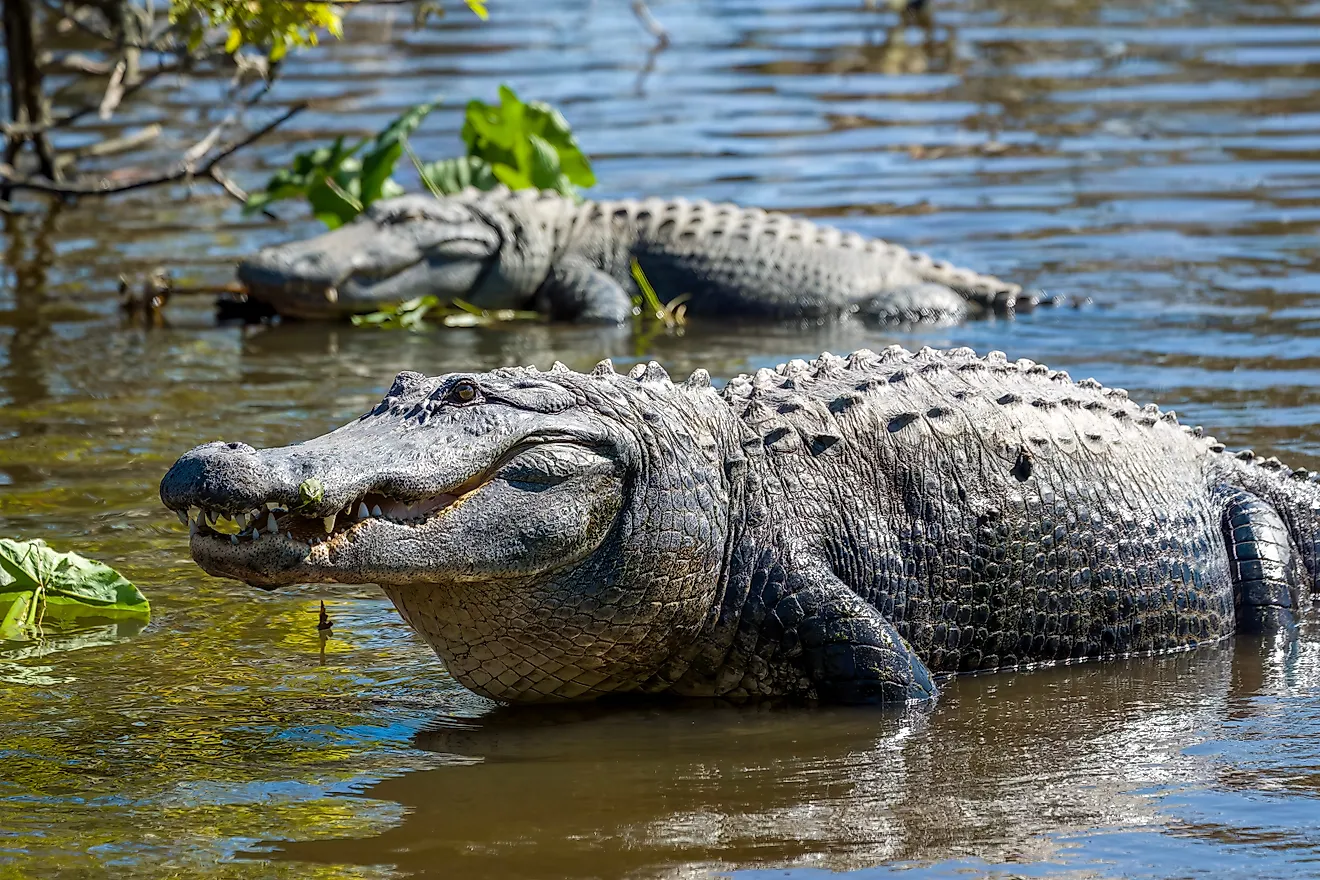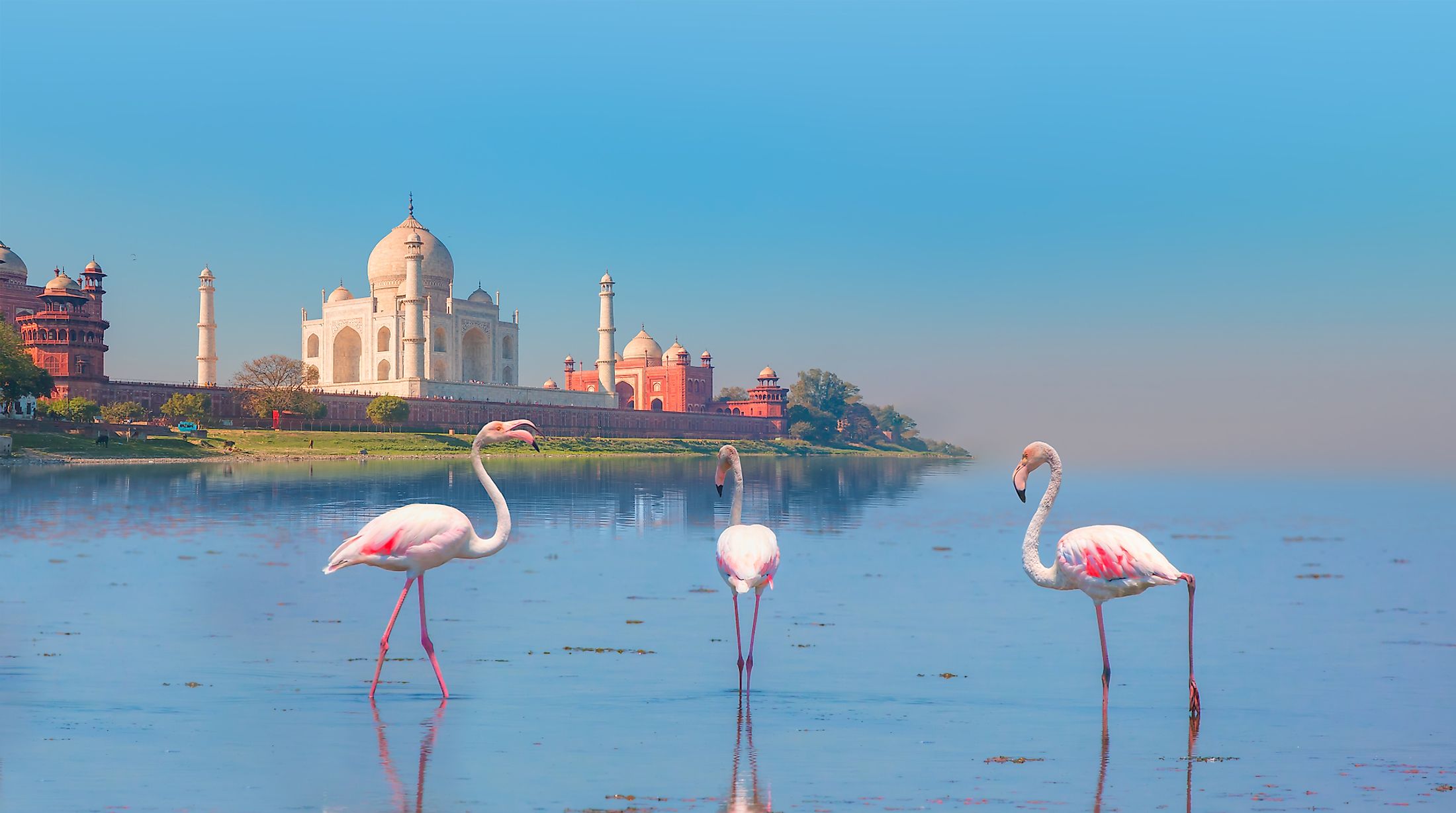
Yamuna River
Also referred to as “Jumna”, the Yamuna River is one of North India’s major rivers and besides the River Ganges, it is also regarded as one of the most sacred rivers of India. Rising in the Lower Himalayas in the Indian State of Uttarakhand, the Yamuna River flows for about 1,376km and finally merges with the River Ganges at the revered Triveni Sangam near Allahabad (Prayagraj). The Yamuna forms the 2nd largest tributary of the Ganges with an average annual flow of 2,948m3/s. The Yamuna is considered the longest tributary of the River Ganges in India.
Geography
The Yamuna River rises at an elevation of 6,387m at the Yamunotri Glacier on the southwestern slopes of Banderpooch massif in the Mussoorie Range of the Lesser Himalayas in the Uttarkashi District in the Indian State of Uttarakhand. The river then flows in the southward direction for about 200km passing through the Shivalik Hills Range and the Lower Himalayan Mountain Ranges.
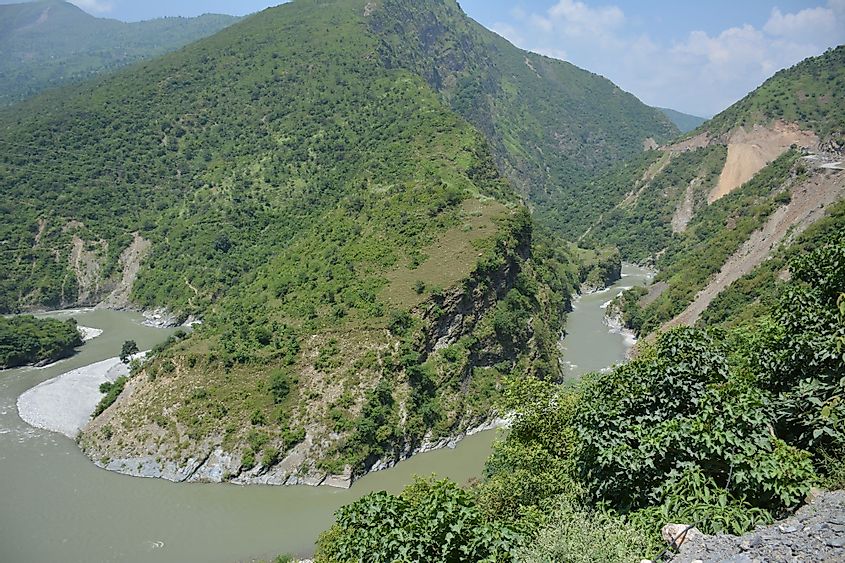
The steep upper catchment area of the Yamuna basin contains many geomorphic features which include steep rock benches, interlocking spurs, large terraces, and gorges. A large part of the river’s upper catchment area is drained by the Tons River. The Tons River is the biggest and the most extensive tributary of the River Yamuna, which joins the Yamuna, near Dehradun, the capital and largest city of the Indian state of Uttarakhand. Some other tributaries of the River Yamuna that also joins the river in its upper course include Rishi Ganga, Hanuman Ganga, Bata, Giri, and Kunta rivers. The Yamuna River then descends on the plains of the Doon Valley. The Dakpathar Barrage helps in diverting the river water into the East Yamuna Canal for hydroelectric power generation. At the Asan Barrage, the Yamuna is joined by the Asan River. The Yamuna River then passes through the holy town of Paonta Sahib in Himachal Pradesh and reaches the Yamuna Nagar District in the Indian State of Haryana. Here, the Hathni Kund Barrage diverts the waters of the river into two large canals, namely the Western Yamuna Canal (which flows towards Haryana) and the Eastern Yamuna Canal (which flows towards Uttar Pradesh). The Yamuna River then flows along the boundary between the states of Haryana and Uttar Pradesh and enters the National Capital Territory of Delhi. After exiting Delhi, the river entirely flows within the State of Uttar Pradesh, through some of its major cities like Mathura, Agra, Firozabad, Etawah, and Hamirpur. The Yamuna River finally merges with the River Ganges at the sacred Triveni Sangam near the city of Allahabad (Prayagraj).
The Yamuna River Basin accounts for about 7.10% of the country’s total geographical area. The State of Uttarakhand accounts for 21.5%, Himachal Pradesh for 1.6%, Haryana for 6.5%, Rajasthan for 29.8%, Madhya Pradesh for 40.6%, and Delhi for 0.4% of the Yamuna River Basin. The Yamuna River thus drains a total area of 366,223 sq. km, which comprises about 40.2% of the entire Gangetic Basin.
Some of the other notable tributaries of River Yamuna include the Hindon River, the Ken River, the Chambal River, the Sindh River, the Sasur Khaderi River, and the Betwa River. In the Indo-Gangetic plain, the Yamuna River runs parallel to the River Ganges and the two rivers create the extremely fertile Ganges-Yamuna Doab region between them. This fertile region is spread across an area of 69,000 sq. km and its high agricultural output supports about one-third of the country’s population.
Significance
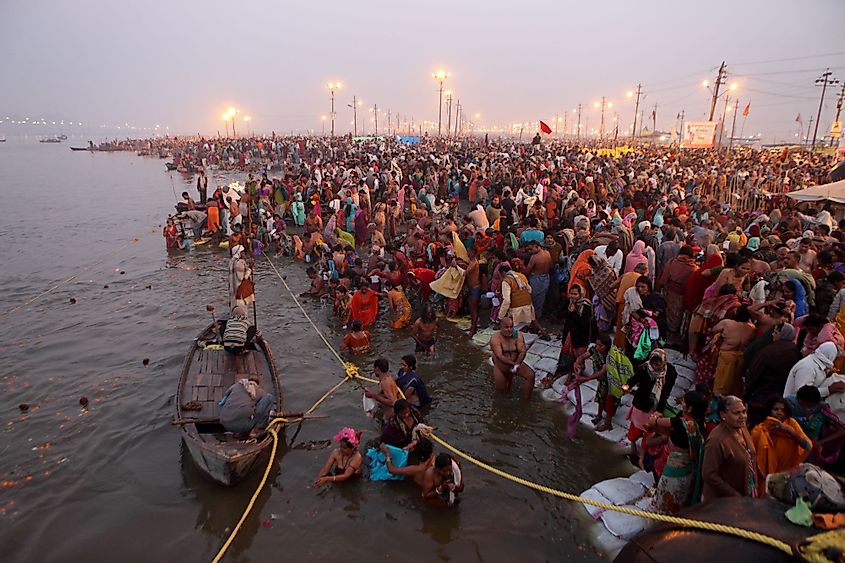
The Yamuna River has immense economic importance in India. Along its long course, the river drains a highly fertile region and its waters help in irrigating extensive tracts of agricultural lands in the Indian States of Punjab, Haryana, and Uttar Pradesh. The river carries about 10,000 cubic billion meters of water, of which 4400 cubic billion meters are used for irrigation. Approximately 57 million people are depended on the waters of the Yamuna for their daily sustenance and about 70% of Delhi’s potable water supply is provided by River Yamuna. The Triveni Sangam in Allahabad is the site of the Maha Kumbh Mela where more than 120 million Hindu pilgrims participate to take a holy dip at the most revered Sangam in every 12 years.
Ecology
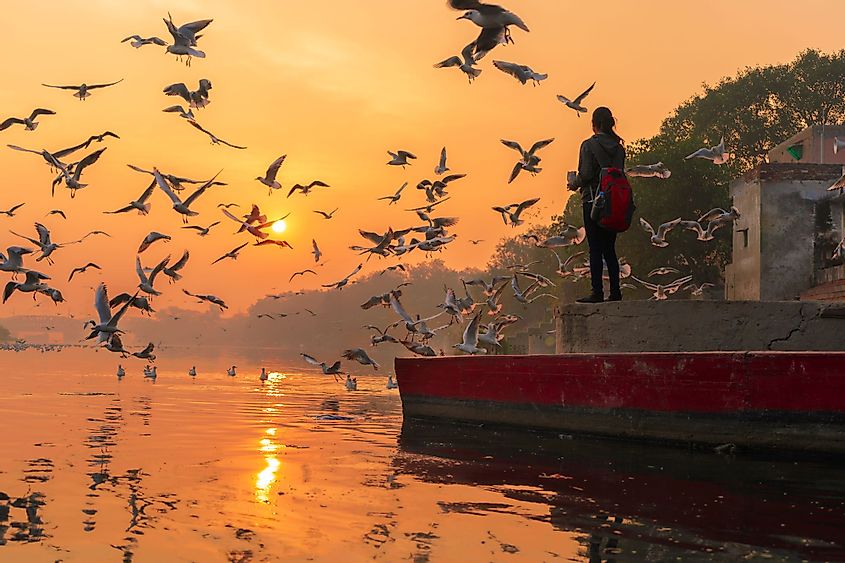
Even though the Yamuna River Basin drains vast areas in the northern part of India, most of the land area does not contain any wild habitats. Many densely populated Indian cities are located along the banks of the river, and therefore most of the local vegetation of the river basin has been cleared off for agricultural purposes. The native flora and fauna are currently restricted to the upper course of the river, i.e., from the Yamunotri Glacier to the Himalayan foothills. The Yamuna serves as the most important habitat for fishes and about 1400km stretch of the river supports a rich diversity of fish species. The presence of exotic fishes like Tilapia has led to the reduction of the native Gharial population in the Yamuna River.
Brief History
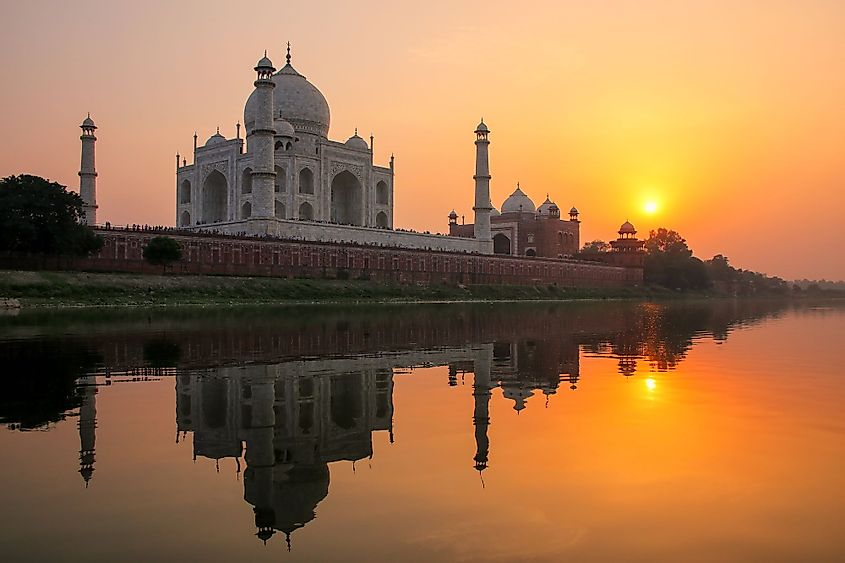
Like the River Ganges, the Yamuna River is also revered as ‘sacred’ by the Hindus. According to Hindu Mythology, the Yamuna River is regarded as the daughter of the Sun God and the sister of Yama, the God of Death. Hindus believe that bathing in the waters of the Yamuna River will free them from the torments of death. The name Yamuna has been derived from the Sanskrit term “Yama” which means “twin”. The Yamuna River has been mentioned in several ancient Hindu texts like Rigveda, Atharvaveda, and the Brahmanas. It is widely believed that the river has served as a source of inspiration for several legends and folk tales relating to the Hindu Gods and Goddesses. Foreign travelers like the Greek historian Megasthenes and Seleucus I Nicator have mentioned the river in their travelogues. Several great empires of ancient India including the Magadha, Maurya, Shunga, Kushan, and Gupta Empire flourished along the banks of this great river. The capital cities of these empires like Pataliputra and Mathura were also situated along the river banks. In the 17th century, the Mughal Emperor Shah Jahan had built the Taj Mahal along the banks of the Yamuna River in the Agra District of Uttar Pradesh.
Environmental Threats
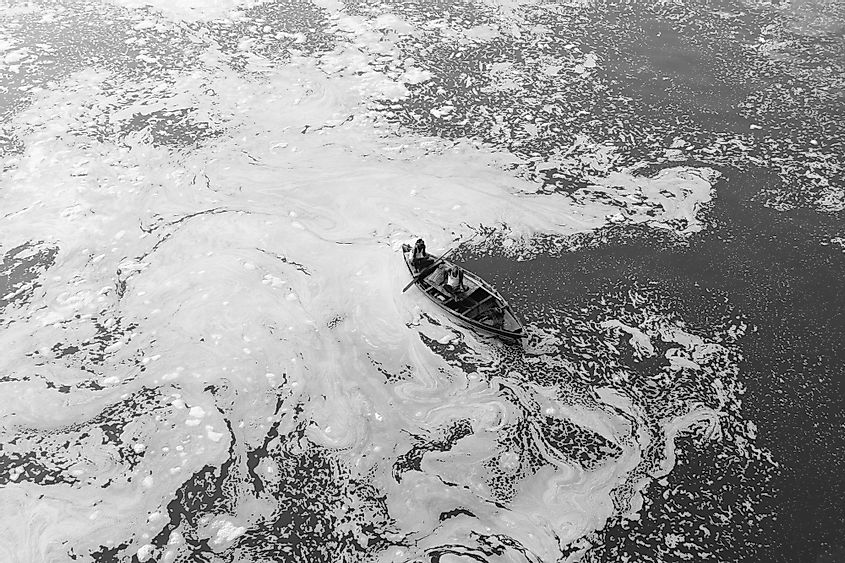
The Yamuna River is considered to be one of the most polluted rivers in the world. The 15 drains that are located between the Wazirabad barrage and the Okhla Barrage directly discharge their untreated wastewaters into the Yamuna and turns the clear waters of the river into a severely polluted one. Human sewage, wastes from households, agricultural run-offs, industrial effluents, ashes from crematoriums, idol immersions, etc also pollute the river. It has been estimated that the Yamuna River receives more than 800 liters of untreated sewage along with 44 million liters of industrial effluents every day. The high level of pollution has degraded the water quality of the Yamuna River and rendered it unfit for consumption.

